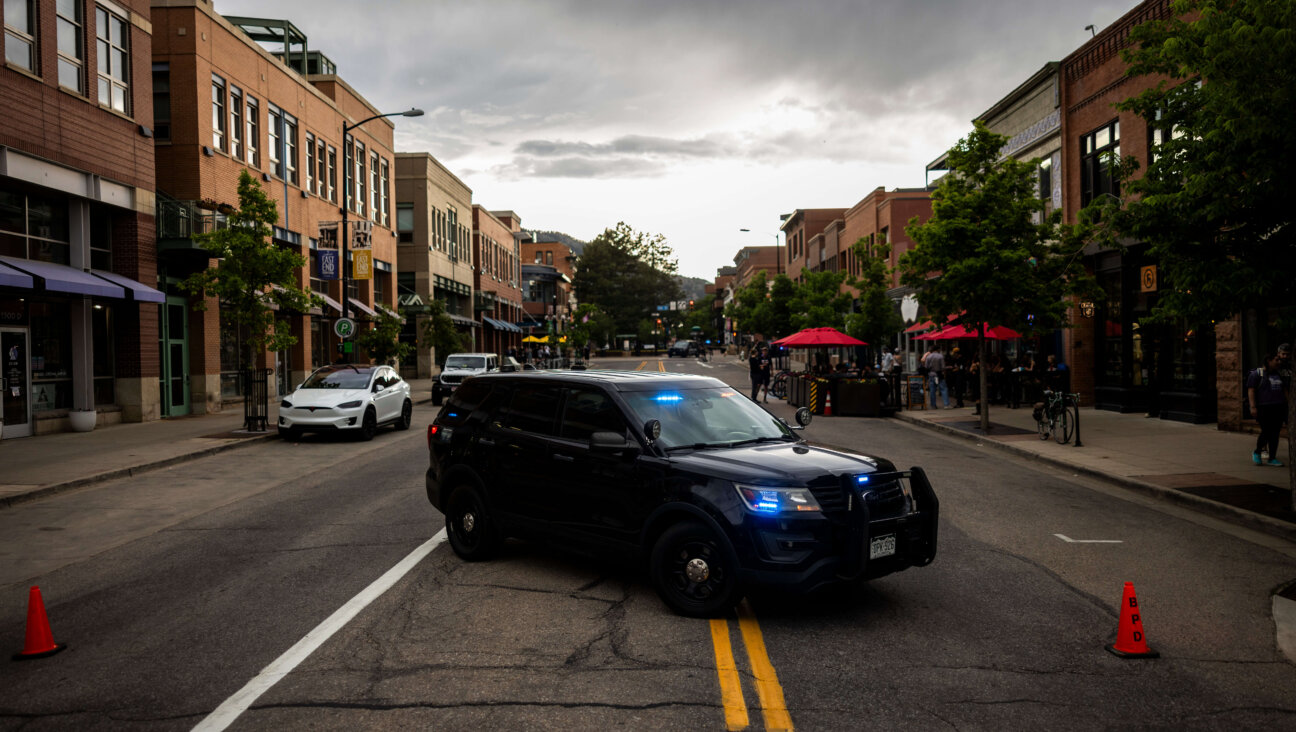Noah knew what it was like to shelter in place

The Deluge, drawn by J Martin, Engraved by W Miller. Published by Blackie & Son. 1844, depicting the biblical flood. Image by iStock

The Deluge, drawn by J Martin, Engraved by W Miller. Published by Blackie & Son. 1844, depicting the biblical flood. Image by iStock
Noah knows what it’s like to quarantine. In the most obvious and perhaps even absurd way, Noah understands what it means to be trapped inside with the entire family and all of the world’s animals (Hey, we could have it worse, right?). He knows what it feels like to gather what you need, go inside, and shut the door.
In the early days of our country shutting down, I held onto this image of Noah building the ark even when he wasn’t yet certain the rain would come. We, too, were stocking up on food for some mysterious future danger that we couldn’t yet see clearly, that might not come at all. All we had was a vague instruction to start gathering supplies and loved ones.
Rashi tells us that Noah was a man of little faith. In Genesis 7:7, the Torah says that Noah entered the ark “because of the flood waters,” and Rashi understands this to mean that Noah entered the ark too late. He should have entered because of the warning from God; instead, he waits for the water to begin pooling around his ankles. He waits until he knows that this is really happening. We, too, waited to enter the ark, waited too long before cancelling schools and ordering everyone to stay home.
But then, we didn’t have the voice of God. The direction to “shelter in place” never came as a clear command from the all-knowing. Instead we heard from multiple authorities who not only offered different advice but often claimed different facts. We continue to get different information from different sources. When is it okay to leave the house? What symptoms are we watching for? Which masks are useful for what? The answers constantly change. The uncertainty is painful.
Although Noah had the benefit of a divine command, his story in scripture is as confusing as our current newscycle. The flood narrative is one of the most convoluted texts in the Torah. Basic elements of the story seem contradictory or oddly repetitive: Noah is told, in one place, to collect two of each animal, and in another, seven. Genesis 7:7 tells of Noah’s family entering the ark, and then they all enter the ark again just a few verses later, in 7:13. How long did the flood last? Which birds did Noah send out?
There are no simple answers to these questions. The timeline in the story is so complex, in fact, that this has become a standard text used to teach the documentary hypothesis — the idea that the Torah contains multiple narratives, from multiple authors, woven together at a later date. Yet in this moment of our lives, when so much is at stake, we long for clearer direction. We want simple answers. And even then, sometimes the message is just too terrifying to grasp. Rashi tells us that Noah “believed and did not believe” that the flood was coming. This ability to both comprehend and refuse to comprehend the severity of the situation may be necessary: we have to believe in the disaster enough to build the ark but not become so overwhelmed that we are paralized.
As a public service during this pandemic, the Forward is providing free, unlimited access to all coronavirus articles. If you’d like to support our independent Jewish journalism, click here.
This lack of clarity is painful because there is so much at stake. The world hangs in the balance today, just as Noah’s world did. For the first time in our lives, we have encountered a moment of crisis without boundaries. No country or industry has avoided this pain. No group of people remains outside of this crisis.
Those of us privileged enough to shelter in place are each Noah, holed up in our own tiny arks. We are cramped and anxious, but we are safe. The world outside the ark is not. What did it feel like for Noah to live inside his four walls knowing that the world around him was washing away? We don’t have to work hard to imagine. Noah listened to the rainfall. I listen to near-constant ambulance sirens racing to overcrowded New York City hospitals.
God tells Noah to enter the ark without telling him when he will leave. One of the most unsettling parts of the order to “shelter in place” is that we don’t know when to come out again. We don’t know what a process of reemerging into the world will look like. And, most terrifyingly, we aren’t sure what world we will find. Genesis 8:5-8 tells us that the water doesn’t just disappear after the rain stops: “At the end of one hundred and fifty days the waters diminished…The waters went on diminishing until the tenth month; in the tenth month, on the first of the month, the tops of the mountains became visible.” Water receding is a long, slow, incremental process. Without an all-clear message from God, Noah is forced to determine for himself when it is safe to open the doors of the ark. Like Noah, it is going to be our job to determine when we can emerge.
Even after seeing the signs of safety, Noah can’t bring himself to reenter the world; he leaves only at God’s direct command: “Come out of the ark… Bring out with you every living thing …and let them swarm on the earth and be fertile and increase on earth” (Genesis 8:16-17). A small step out won’t cut it. Noah and the creatures must “swarm” over the earth! We too will emerge slowly and carefully in stop and start stages, but someday there will come a time when we will again move freely around this beautiful planet.
The first thing Noah does upon leaving the ark is build an altar to God. It is this offering that leads God to make a promise: “The LORD smelled the pleasing odor, and the LORD said to Himself: “Never again will I doom the earth because of man” (Genesis 8:21). This is where our story differs from the biblical flood. The flood is a punishment, and Noah merits his own survival. Our world doesn’t work that way. This pandemic is not divine retribution, and many who have died lived beautiful, righteous lives. I take this verse, this promise from God, very seriously. We are in a moment of doom, but it is not “because of man.”
The story of the flood ends with a rainbow, which has been adopted as an image of hope in this pandemic, posted in windows across the city as we seek universal ways to tell each other that “everything will be okay.” There is something instinctively comforting about seeing a rainbow in the sky. It reminds us that, no matter how hard the rain, there is always potential for the sun to return. And of course, rainbows appear before the water has completely dried.
Rabbi Avi Killip is VP of Strategy and Programs at the Hadar Institute. She was ordained from Hebrew College’s pluralistic Rabbinical School in Boston and holds degrees from Brandeis University in Jewish Studies and Women & Gender Studies. She was a Wexner Graduate Fellow and is a current Schusterman Fellow.























